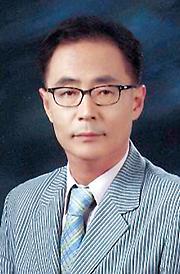Government must work toward vocational colleges’ sustainability
By Korea HeraldPublished : Sept. 18, 2012 - 20:56

There are two major types of higher education institute in Korea ― two-to-three-year vocational colleges and four-year general universities.
There have been both dark and bright sides to vocational college education in recent years.
Let’s review some of the negatives first.
As of 2011, 503,493 students were enrolled in 147 vocational colleges, while 1,437,058 students were enrolled in 183 universities. It’s been pointed out that the constant decrease in the age cohort of college education and young people’s preference for universities makes it harder for vocational colleges to secure enrolment and revenue.
A recent manpower forecast predicts that 28,000 vocational college graduates would be oversupplied to the labor market for the period of 2008-2018, while 17,500 university graduates would be supplied during the same period.
These two facts signify the need for restructuring and innovating vocational college education. The government’s investment per student in vocational colleges amounted to about $883, while that for universities amounted to about $1,884 in 2011.
The discrepancy in financial support between the two raises questions about adequate financing of vocational colleges.
In spite of these problems, we also need to review the bright side. A vocational college student paid about $4,869 in tuition fees in 2012, while their university counterparts paid about $5,641.
Accordingly, vocational college students pay less and get jobs more easily. This could be one advantage of entering vocational college.
In addition, vocational college graduates have more job opportunities than four-year university graduates. According to a government statistic from 2011, the employment rate of vocational college graduates stood at 60.7 percent, higher than university graduates’ 54.5 percent.
Vocational colleges have also tried to open “attractive departments,” which reflect manpower demands from newly emerging occupations in industries such as cruise buffets, medical tourism and wedding planning. These efforts will help vocational colleges recruit young people.
These things may prove the sustainability of vocational colleges in the Korean higher education system.
However, vocational colleges still need strong government support in terms of finance and institutional arrangements.
Other priority tasks to be tackled by the government are increasing financial support for vocational colleges, supporting the development of vocational colleges as life-long learning centers for adults, and demarcation of departments between the two types of higher education institutes to prevent any institute from intruding into the traditional department areas of vocational colleges.
By Jung Tae-hwa
Jung Tae-hwa is a senior research fellow at the Korea Research Institute for Vocational Education & Training. ― Ed.
There have been both dark and bright sides to vocational college education in recent years.
Let’s review some of the negatives first.
As of 2011, 503,493 students were enrolled in 147 vocational colleges, while 1,437,058 students were enrolled in 183 universities. It’s been pointed out that the constant decrease in the age cohort of college education and young people’s preference for universities makes it harder for vocational colleges to secure enrolment and revenue.
A recent manpower forecast predicts that 28,000 vocational college graduates would be oversupplied to the labor market for the period of 2008-2018, while 17,500 university graduates would be supplied during the same period.
These two facts signify the need for restructuring and innovating vocational college education. The government’s investment per student in vocational colleges amounted to about $883, while that for universities amounted to about $1,884 in 2011.
The discrepancy in financial support between the two raises questions about adequate financing of vocational colleges.
In spite of these problems, we also need to review the bright side. A vocational college student paid about $4,869 in tuition fees in 2012, while their university counterparts paid about $5,641.
Accordingly, vocational college students pay less and get jobs more easily. This could be one advantage of entering vocational college.
In addition, vocational college graduates have more job opportunities than four-year university graduates. According to a government statistic from 2011, the employment rate of vocational college graduates stood at 60.7 percent, higher than university graduates’ 54.5 percent.
Vocational colleges have also tried to open “attractive departments,” which reflect manpower demands from newly emerging occupations in industries such as cruise buffets, medical tourism and wedding planning. These efforts will help vocational colleges recruit young people.
These things may prove the sustainability of vocational colleges in the Korean higher education system.
However, vocational colleges still need strong government support in terms of finance and institutional arrangements.
Other priority tasks to be tackled by the government are increasing financial support for vocational colleges, supporting the development of vocational colleges as life-long learning centers for adults, and demarcation of departments between the two types of higher education institutes to prevent any institute from intruding into the traditional department areas of vocational colleges.
By Jung Tae-hwa
Jung Tae-hwa is a senior research fellow at the Korea Research Institute for Vocational Education & Training. ― Ed.
-
Articles by Korea Herald




![[Music in drama] Rekindle a love that slipped through your fingers](http://res.heraldm.com/phpwas/restmb_idxmake.php?idx=644&simg=/content/image/2024/05/01/20240501050484_0.jpg&u=20240501151646)

![[New faces of Assembly] Architect behind ‘audacious initiative’ believes in denuclearized North Korea](http://res.heraldm.com/phpwas/restmb_idxmake.php?idx=644&simg=/content/image/2024/05/01/20240501050627_0.jpg&u=20240502093000)




![[KH Explains] Will alternative trading platform shake up Korean stock market?](http://res.heraldm.com/phpwas/restmb_idxmake.php?idx=644&simg=/content/image/2024/05/01/20240501050557_0.jpg&u=20240501161906)







![[Today’s K-pop] Stray Kids go gold in US with ‘Maniac’](http://res.heraldm.com/phpwas/restmb_idxmake.php?idx=642&simg=/content/image/2024/05/02/20240502050771_0.jpg&u=)